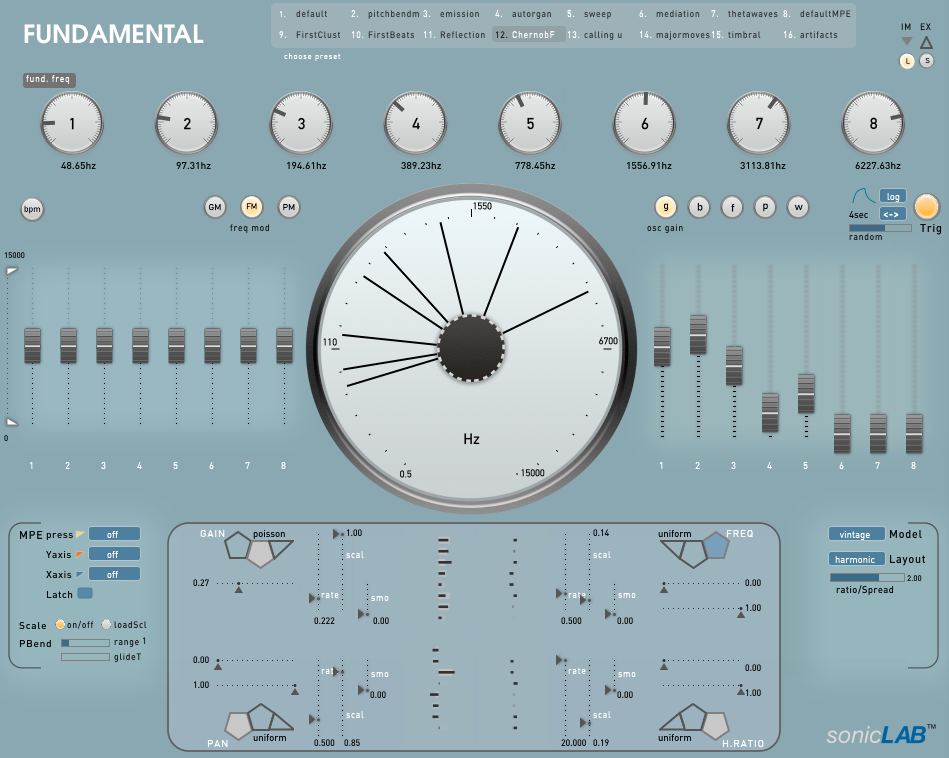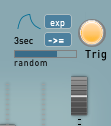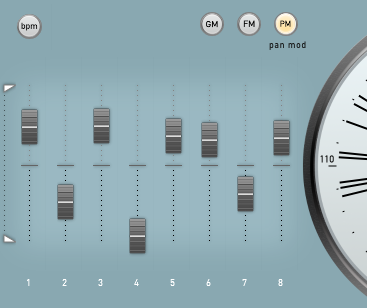Make eerie, modulating drones like it’s a disco in the Exclusion Zone. Or delve into the sound tools of Stockhausen. But for anyone who loves finding shifting, nuanced colors in oscillators – Hainbach and Sinan Bökesoy have created something for you.
I’ve had early versions to test, plus spent a lovely socially distanced afternoon in the park with Hainbach talking about the vision. And this is just fantastic.
Before there were modular synthesizers as we now know them, you either had to DIY some circuits to make sound (as Louis and Bebe Barron did for Forbidden Planet), or make use of test equipment. That test equipment was just made to oscillate – but with vacuum tubes inside, has a unique sonic color, to say nothing of some very handsome retro designs.
Musician and video producer Hainbach is one of the people who’s been reviving interest in these vintage pieces of equipment. Since they’re large, heavy, and not terribly useful today, people do get rid of them. (Another case is the Waveform Research Centre in Rotterdam, which has even set up residencies.)
So, when Hainbach said he was working on a plug-in that incorporated these ideas, I figured we’d get just a big set of oscillators. Fundamental, created with developer Sinan Bökesoy (aka sonicLAB), is actually a lot more. You get a nice set of European-mid-Century dials, to be sure, and they’ve modeled the characteristics of the tone of the original devices. But they’ve also added a whole lot of additional modulation. That echoes the way musicians re-appropriating this equipment use them now but, armed with some new stochastic software features, you can also do a lot with the software that would be difficult on the hardware.
Fundamental is, in short, an invention that collapses time between different generations of sound synthesis. It has the focus and warm, intimate sound of the original test oscillators, but re-contextualized as an integrated compositional system. It’s both very vintage and yet more modern than a lot of plug-ins out there – as it focuses on deep compositional control and live expression for open-ended experimentation.
And yes – want some drones? This can drone. Want those drones to shift and change, so you never get tired of oscillators? Absolutely. Want to make fuzzy sounds like you’re at Chernobyl? It’s in there – there’s even a nice Chernobyl preset.
And the funny upshot of it is, the vintage aspect really focuses the UI. I love sonicLAB’s stuff, but operating Cosmosƒ Saturn8.1S could make you feel as though someone left you at the controls of a Cardassian scout ship without training or a translator. That has its own appeal, but Fundamental pares down to the basic elements of sound.
Vintage tubes in modern software

While you don’t have the freedom you might in a fully modular environment, Fundamental is unique both for modeling vintage German tube sounds, and for presenting a particular compositional point of view.
Interestingly, the heart of this is “polymorphing” wavetable synthesis – that is, they’ve modeled the actual waveforms of the originals. That makes the download 41 MB, but with a convincing sonic recreation of the oscillators themselves. (I’ve spent some time with them at Waveform Research Centre. This sounds really good.)
You tune those waveforms from a tiny 1Hz up to 3800Hz across 8 simultaneous voices (with 4 wavetables per voice). And then you get additional controls to shape your sound:
Tiny fine-grained frequency and gain controls (part of the advantage of the test equipment is that they are very, very precise, so there’s a different approach rather than blasting out a middle C)
You can set your own tunings, or choose a harmonic distribution, like so:

There’s Scala tuning import (with a few handy tuning tables already included)
There’s tons of modulation: 4 modulation sources per voice, for 32 total. I mean, you could think of this as a very precise, new wavetable synth. But this again returns to the unique stochastic modulation that marks sonicLAB’s instruments. (“Stochastic” refers to a generative, indeterminate process – think random with some nuance, if you like.)
You also get independent attack/release for each with various modes which can also have controllable amounts of randomization.
You can play the results, with full MPE support – so this would be wonderful with expressive controllers.

There are both pure digital and modeled tube modes. That means with all sounds, you can swap the engine from the tube to digital mode and experiment with different colors.
Workflow
The workflow for something like this will be different than a more common instrument – that’s rather the point. It’s really about finding a structure in sound, both in the sense of something fixed and something that transforms organically.
You can trigger or modulate your sounds with an external input. But there’s a trigger in the right-hand corner, so most commonly you’ll start with everything oscillating – just as you would with the actual hardware. (Just note an input will override the frequency settings – which can get confusing if you accidentally send MIDI. Or maybe that was just me making that mistake when I first used it.)

Having eight voices is really like having eight test tone generators in front of you. You’ll find the vintage/pure switch isn’t subtle, either so – play with that, as the “vintage” tube version has a load of saturation that gives it a totally different character, but it’s useful in pure mode, too.
On the left-hand side, you can choose the amount of modulation you assign each of those voices, which also lets them phase with one another. And yes, there’s a bpm switch, so you could create something rhythmic with this, as well, not just endless beatless drones.

There are elements of the modulation section that are familiar – even if you have to squint a bit to read them. Each has rate, scale (amount), and smoothing. But you can also choose different stochastic patterns, and there are a lot of choices – click those polygon-shaped icons to select type, and then click the title to bring up a pop-up menu with various options.

In particular, you can structure ideas around harmonic ratio and choose a harmonic spread – for some of the same kinds of pitch ideas that I explored in the review of Moog’s Subharmonicon.
I do wish those controls were easier to see and manipulate; it’s my one criticism here.
But you do have access to presets. And because modulation is so much a part of this, you can quickly modify those presets into something really different. Click the L and S buttons in the upper right-hand corner to load and save, respectively.

Pricing/availability
Right now, there’s a four day trial on.
Intro price: 49 EUR
then rises to 69 EUR, and a student price of 39 EUR
Have at it. It’s available as VST3 for Windows and macOS, plus AU for the Mac (64-bit only for each):
https://www.sonic-lab.com/fundamental/